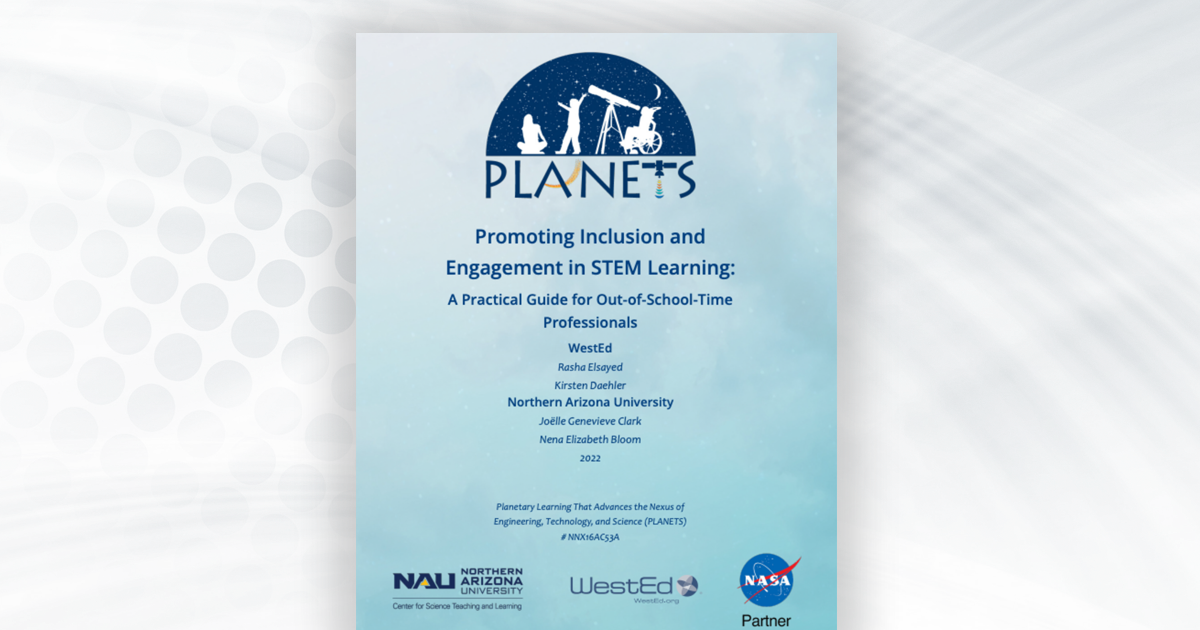New Guide Provides Practical Strategies to Support STEM Education for all Learners
Posted on

November 8, 2022—Research shows that participating in out-of-school-time (OST) programs focused on science, technology, engineering, and mathematics (STEM) helps promote academic success, health, well-being, and identity development. In order for youth to have access to the inclusive and engaging STEM learning environments that they deserve, educational institutions need to invest in OST educators and resources to provide equitable access to diverse populations of youth.
Now, a new guide for OST professionals offers practical strategies and guidance for teaching STEM to diverse populations of youth. The guide is based on a review of the research on supporting Indigenous learners, emergent multilingual learners, and learners experiencing differing physical and/or sensory disabilities, and feedback from OST educators working with these youth in STEM.
Promoting Inclusion and Engagement in STEM Learning: A Practical Guide for Out-of-School-Time Professionals, created by WestEd in collaboration with Northern Arizona University, offers guidance on STEM program design, instructional practices, curriculum design, and professional learning to reach and teach diverse youth using multiple means of engagement, representation, action, and expression.
Developed through the NASA-funded PLANETS (Planetary Learning that Advances the Nexus of Engineering, Technology, and Science) partnership, this guide contributes to the development of NASA OST curricular and educator resources for Grades 3-8 that facilitates STEM learning with an emphasis on planetary science and engineering.
“The guide challenges OST professionals to think critically about what it means to provide STEM education for diverse populations of youth and provides them with effective strategies supported by universal design for learning and culturally sustaining pedagogy frameworks,” said Kirsten Daehler, WestEd Director of Science and Engineering and co-author of the guide.
The guide includes a section on Promising Practices for Program Design intended to help OST program directors and curriculum developers create welcoming learning environments that engage youth, their families and other supportive adults.
“Learning environments should be culturally and linguistically welcoming,” said Rasha Elsayed, WestEd Research Associate, and co-author of the guide. “When educators acknowledge the assets that youth and their families come with in STEM learning or use a variety of communication methods that represent the learner’s contexts, it engages all learners.”
In tandem, OST educators can use the Promising Instructional Practices section to facilitate inclusive and cooperative learning environments.
“Inclusive learning environments provide multiple entry points for learners to express, communicate and demonstrate their understanding.” said Joëlle Genevieve Clark, Director, Center for Science Teaching & Learning, Northern Arizona University. “Providing multiple options for expression helps create learning environments that are cognitively and socially inclusive for all learners.”
The guide also offers a Promising Practices for Professional Learning section for professional learning providers to develop educators’ cultural literacy and their knowledge and awareness of youth and their communities.
